Way to Technical and Vocational Education and Training (TVET) Sector Wide Approach (SWAp): Opportunities and Challenges
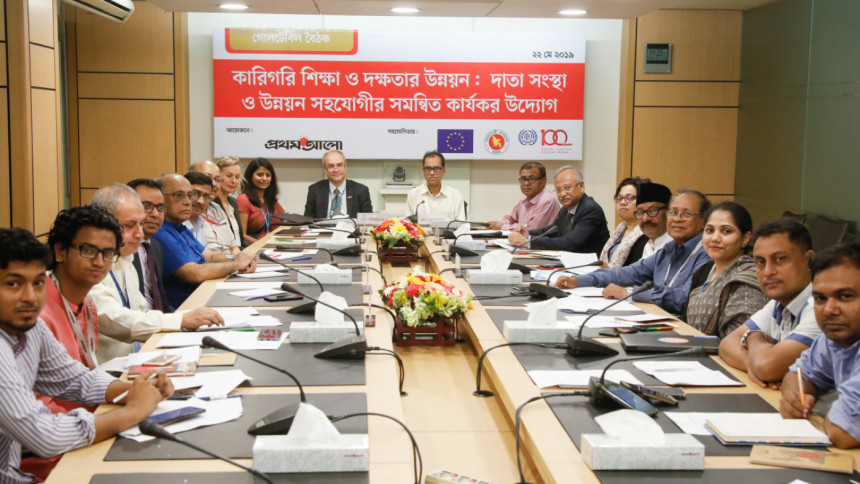
Recommendations
- There should be strong leadership from the government to carry forward the sector wide approach agenda of technical education and skills development
- The upcoming five-year plan should place more emphasis on technical education
- We need to enhance the skills of teachers in technical institutions
- The curriculum in technical education institutes should be reformed keeping in mind the Fourth Industrial Revolution
- We have to ensure that students at the higher education level are equipped with adequate skills
- Private sector should come forward to play its role in technical education and skills development
- We need proper analysis of the labour market
- There should be more than one board for technical education
- Acceptability of skills certification beyond Bangladesh should be brought in through mutual agreement
- Steps should be taken to ensure availability of technical education for dropouts
Abdul Quayum, Associate Editor, Prothom Alo
The topic of discussion today is technical and vocational education. We would like to talk about how development partners, private organisations and other stakeholders can work collectively. If all the work that is being done could be carried out under a broader plan, then we would be able to avoid duplication, and make the entire exercise more effective. If the government takes up an initiative to do this and implements it, then we could achieve more benefits. We have seen this happen in the field of primary education. We could use our experience to apply the same to technical and vocational education, and explore the possibilities and challenges.
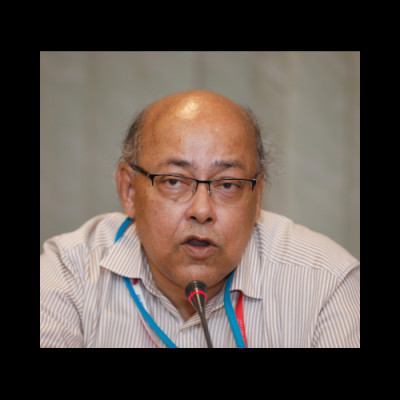
Manas Bhattacharya, Specialist, Skills 21 Project, ILO
Within this room, we have four decades of experience in SWAp in Bangladesh to start a completely new discourse. We have Primary Education Development Programme (PEDP) which has actually traversed about two decades of SWAp, similar to the health ministry. We are proud that SWAp in TVET is being led by Mr Alamgir, Secretary, TMED, who had also led SWAp in primary education. It was last year that development partners and the government agreed on a sector wide approach in TVET education. A 15-member committee was formed to steer this process forward. The committee was constituted in September 2018; its first meeting was held in December when the committee directed ILO, who is also providing technical support to TVET SWAp in addition to playing the role of a development partner, to undertake a study on a comprehensive TVET situation analysis and explore the development priorities that the SWAp community can consider for pursuit.
The aforementioned committee has begun to look at the sector comprehensively to identify areas where the government, development partners and other stakeholders can be on the same page to dedicate themselves to embark upon a SWAp. The purpose of today’s meeting is to identify the potential challenges in this process. This roundtable will be a learning ground to know from other SWAps-the challenges they faced, the issues they confronted with and the ways they could overcome the obstacles. With these learnings, the TVET SWAp can potentially reap the benefits of being a late-starter so that the TVET SWAp can avoid wastage of time that the other SWAps had to suffer from.

Tuomo Poutiainen, Country Director, ILO
At this juncture of skills development and TVET in Bangladesh, it is important to discuss the experiences on how to generate better use of resources and how to have a general skills governance plan that could be shared so that we at ILO, other members of the UN and development partners can, together with the government, truly focus efforts on being able to provide the right kind of assistance-technically, financially, and policy-wise. The government has done a great job and continues to build on the skills framework because this is what Bangladesh very much needs. I think we will see in the next planning process for the next five-year plan quite a big emphasis on employment and skills. It is quite important that there are lessons learnt and discussions on how to make the SWAp process a conduit for better aid effectiveness, better direction and better focus in terms of skills development processes. ILO is happy with development partners’ programmes such as those of the ADB and the World Bank; we can come together to support those plans that come from the SWAp process-which essentially have to be government plans and owned by them.
Having said that, it is important that these plans are not developed in isolation of the opinions and views of the employers of the private sector and those of the workers and operators of these various skills organisations. The discussion is extremely productive. There is already a vision and policy, which will be enforced through five-year plan process. The development partners are thinking in terms of 4 years’ programme; they should now think in terms of SWAp. Resources can be deployed strategically if there is a common purpose. It is necessary to have a results-based programme. There are emerging needs arising from high degree of informality, gender disparity, retention of highly skilled people and market connectivity. There is also a need to think about up-skilling of migrant workers. The TOR of a SWAp is very relevant; it asks the right kinds of questions.
There is also the issue of privatisation to be taken into consideration. The development partners (DPs) need specific discussions about how they can contribute to the government; the government also has to come clearer. We are working with the government on employment strategy. Skills are very important for employment, recognition and for the future.
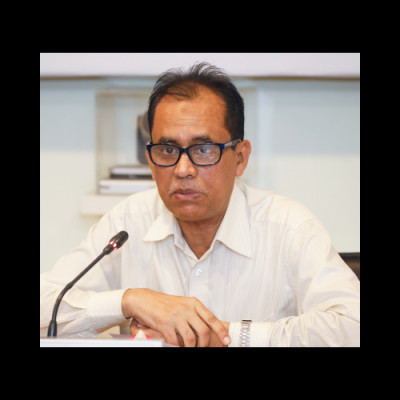
Md Alamgir, Secretary, Technical and Madrasah Education Division
In my capacity as the DG of the directorate of primary education, I learnt that SWAp was in place. I learnt in an event that I attended that the SWAp approach was being taken in higher education as well. Madrasahs were taken into account but the technical education part was left out. Since the ministry of primary and mass education controls primary education and the secondary and higher education division controls secondary education and madrasahs are also under the education ministry, it’s not too difficult to bring all this under one umbrella. But there are around 22 ministries that work for technical education and skills development. So the question is: who will take the lead? That’s why technical education was kept out of the SWAp approach in other branches of education-since it would take a lot of time and effort to coordinate among all these ministries.
ILO came forward to help us among others. There were talks that we would take it up under the Skills 21 project. And we went to the Philippines and Malaysia to get an idea. We formed a committee on SWAp, which held a meeting in December. That SWAp committee came up with some terms of reference: establish priority action areas for SWAp 1 in the context of a long-term strategy to unify and strengthen the workforce development in Bangladesh; identify likely contributions to SWAp 1 from development partners and the government; draft the SWAp 1 action plan for approval by the government; form relevant technical working groups agreed through an MoU among all partners; overview the implementation of SWAp 1 action plan and the agreed overriding structure; among others.
To work through SWAp, one cannot directly go towards implementation. You have to discuss with stakeholders and come to a consensus, then prepare a strategy, then decide who is going to finance, then you have to wait for the funds. There are many complications in the SWAp process. In technical education, I haven’t seen many development partners come forward, except for European Union. But there is no question that the current government has put a lot of emphasis on technical education.
In the last 2-3 years, many projects have been undertaken. In its manifesto, the government has pledged that there will be a technical college in every upazila. The Planning Commission is in favour of it and we hope that it’s approved by the ECNEC soon. Permission has already been granted for four more technical institutes for girls, and for 23 districts that did not have a technical institute. Now, it’s all about implementation. The government has taken up a plan to introduce technical education from class VI to VIII starting from 2021. The budget for this project is under preparation. The government will put the plan into motion after getting adequate funds. Meanwhile, two projects have been approved-one of which is introducing technical education in 640 schools and madrasahs at the secondary level starting from 2020.
The other project is the following: the government, starting from 2021, will propose to all schools and madrasahs that if the institutions arrange labs and classroom facilities, the government will provide teachers. They will be enlisted under the MPO. Those in class IX and X who do not enroll in technical education courses will have to take a subject for 100 marks for skills development. This will be made mandatory.
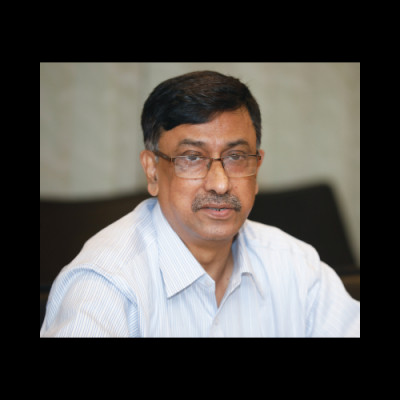
Chowdhury Mufad Ahmed, Senior Education Advisor, UNICEF
In the last few years, we have seen an increase in the eagerness and discussions when it comes to skills development. One indicator is the increased admission in polytechnic institutions. Another indicator is girls’ enrolment in such institutions. We have formulated policies; established standards and assessment tools; and the National Training and Vocational Qualifications Framework (NTVQF) structure has begun to take hold. So, we have definitely made progress. Donors too are now increasingly eager when it comes to skills, and they are putting more and more emphasis on skills development.
However, unfortunately, there is no coordination among the donors and also within the sector. It is very difficult to achieve coordination in the sector because there are numerous ministries. This type of problem was not there in the education and the health ministry. Sector wide approach for primary education started with PEDP 1 though it was only there in name. There was very loose coordination in PEDP 1. In PEDP 2, it was the first time that the DPs pooled funds. There were also parallel funds being implemented like projects. It was in PEDP 3 that the treasury approach was brought for the first time. This is being continued in PEDP 4. In Secondary SWAp, it was a unified budget approach. The challenge in the skill sector is huge. One of the challenges in skills SWAp is institutional arrangement. Skills development is not limited to the education ministry; the latter is only responsible for academic institutions. But there are several skills development training centres within other ministries. So, we have to think about how to bring all these together. My suggestion is that we should start with a loose coordination mechanism among all the partners; it could be done under the leadership of the skills development authority. Perhaps, it could take the form of a semi-SWAp project.
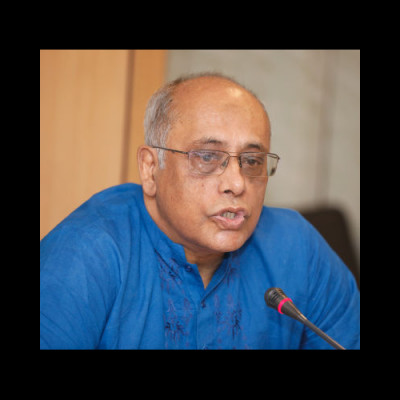
A M Zakir Hussain, Senior Management Expert, EU support to health and nutrition to the poor in urban Bangladesh
The idea of SWAp in the health sector originated in 1997. We have more than 20 years of experience in the health ministry. The purpose of SWAp was to bring the workplan and budget of all the stakeholders (private sector, NGOs, government) to one single place, so that the government could get a comprehensive picture of who is spending or contributing how much to the different aspects of healthcare. But this was never achieved because of a weakness in leadership. It was decided from the very beginning that the line director will head the coordination programme. He will be assisted by the programme director and assistant programme director. Efficient officers would be deployed in those posts. Political or other considerations would not influence the process. We couldn’t make the private sector disclose information about their expenditures, ongoing activities, etc; even NGOs eventually stopped disclosing information.
For skills development, I would like to emphasise upon the word “technological” rather than “technical”. The former has the component of knowledge which doesn’t necessarily come through in “technical”. We also tend to talk about hard skills, not soft skills such as communication skills, emotional intelligence, etc. Focusing on the soft skills is just as important.

Syed Rashed Al Zayed Josh, Senior Economist, The World Bank
PEDP 3 and PEDP 4 are not only SWAps but also results-based programmes. When government achieved the results, development partners disbursed the funds on the basis of measurable results. PEDP 3 was a real SWAp, whereas PEDP 2 was a test case. PEDP 4 is more than a SWAp; it’s a results-based programme. Our SWAp experience so far has been positive. When it comes to SWAp, the GoB has to be in the driving seat. When the government sets the priorities, there are multiple considerations: experience, capacity, needs, future of the economy, etc. At the same time, there are political realities. That is how the policies and priorities are defined.
At this moment, the GoB has two very distinct documents: one is 2010 National Education Policy which has some clear guidelines about technical education and the 7th Five Year Plan. These two documents will play a key role in terms of setting priorities. There’s the Education Local Consultative Group (ELCG) which is led by the Secretary of the GoB. The development partners, NGOs, and other stakeholders are a part of it. When the ELCG plays a role, coordination becomes easier. It’s up to the GoB to decide how it wants to design technical education and how it plans to skill its youth. These are reflected in the programme document approved by the ECNEC. Development partners support only a part of the programme, not the entire programme. In case of PEDP 4, the GoB prepared the programme document and development partners gave technical assistance. That’s how SWAp is usually developed. Technical education is expensive and it is always changing due to technological transformations. Technical education and skilling may not be the same thing, i.e. getting an educated person and getting a skilled person isn’t always the same. If we talk about technical education, we may miss the youth. We need to think about how we take drop outs into consideration.
We are very interested in SWAp. In technical education and skilling, involvement of private sector is very important. The World Bank has just completed USD 217 million skills and technical education programme with the Bangladesh government. The World Bank’s contribution was USD 180 million. At the moment, we are discussing with the government about the next generation programme, and we are looking forward to a SWAp approach.

Md Jahangir Alam, Director, Directorate of Technical Education
In 2008, TVET enrolment was one to two percent whereas in 2017/18, it reached almost 16 percent, which is a great achievement. The TVET sector isn’t like other sectors: many stakeholders are involved here. When the National Skills Development Policy (NSDP) was formed in 2011, everyone, including policymakers, began to give importance to TVET. The current projects that are running are worth about USD 1.55 billion. So, there is no doubt that the GoB is giving ample importance to TVET. After NSDP, many donor agencies such as the World Bank came forward.
Through TVET reform, technical education has spread all over the country. Many of those who are poor and meritorious have been awarded scholarships. So we really did work hard to increase TVET enrolment. Another thing to be noted is that the teachers in these institutions have received training both within the country and abroad; and now students are being trained by them and being skilled up. Other types of education are limited to the confines of that institution. But a technical institution must look like an industry (arising from the “teaching factory concept”) and should take on the role of a job fair where employers can be linked up with students for whom this can provide a means to get employment. Donor agencies are helping us with bringing in such new concepts, e.g. the concept of registered training organisation (RTO). Through the Skills 21 project, we are going to formulate a national qualification framework (for mutual recognition) which can help match our graduates with employers abroad. We should also focus on employment support services to help fresh graduates. Donor agencies have taken up programmes to spread awareness about TVET including through skills competition. However, I would like to point out to donor agencies that there is some duplication which can lead to wastage of resources.
The Bangladesh government has taken up huge initiatives; this has to be taken forward in a coordinated way. Overseas demand for skills also would need to be met. The TMED has already taken an integrated action plan. Increase in TVET enrolment would help the country to progress. Steps have been taken to address shortage of teachers. Quality issues are also being addressed. The SWAp priorities have to come from the government; there is already a plan for the SDG; five groups have worked for one year to develop this plan. We have to keep the demand and supply situations in mind. Also, the lessons learnt have to be taken into account. Skills 21 project has brought many new initiatives.
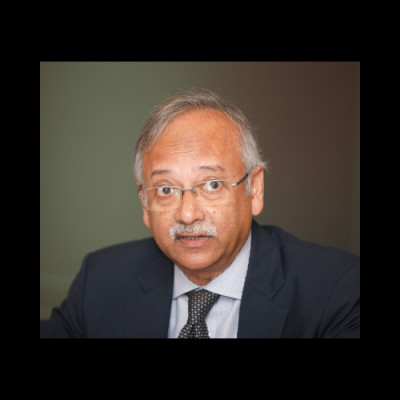
Kamran T Rahman, President, Bangladesh Employers’ Federation (BEF)
According to the Labour Force Survey, the labour force consists of about five crore people. The problem is that more than 80 percent of the labour force are in the informal sector; hardly 10 to 15 percent are in the formal sector. On top of it all, every year about 2 million people are being added to the labour force. But we don’t have enough jobs for all of them. A huge portion of this labour force remains underemployed. One of the main reasons is skills gap arising out of the mismatch between the requirements of the industries and the supply of skills in the market. And in the future, this skills gap is likely to widen because of the Fourth Industrial Revolution (automation, robotics, artificial intelligence, new technologies). So for Bangladesh, this presents a double-edged sword: as it is, we are working with low tech and then there is the problem of new technologies because of which many in the workforce are going to be displaced.
Of the workers we have at present, many of them are not trainable. Many have left the country and are being employed as unskilled workers abroad, particularly in the Middle East. Some have skills (such as electricians) but to recognise their skills, there is a need for recognition for prior learning (RPL) for which you need assessors who also have to be trained. We don’t have such assessors. Then there is also the need for mutual recognition of certification of skills without which Bangladeshi migrants, despite having certain skills, will be employed as unskilled abroad and receive lower wages. Skilling/upskilling/re-skilling the people is of utmost importance for which you need quality technical education based on market demands and the right curriculum.
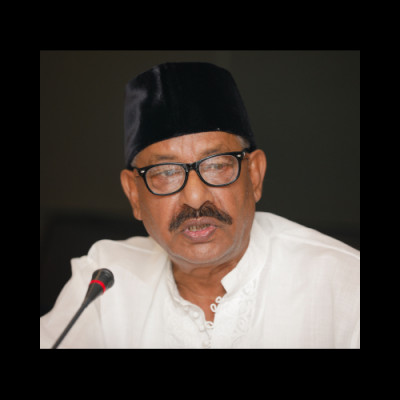
Shah Md Abu Zafar, Chairman , National Coordination Committee for Workers’ Education, (NCCWE)
During every election, the government makes lots of promises. But in reality, most of those promises remain unfulfilled. Technical education and madrasahs fall under the same division. There is a lot of work to be done for madrasahs. So, where is the time to devote to technical education?
There is only one board for technical education-that too only in Dhaka. There are many structural flaws of technical education institutes. In addition, there aren’t enough skilled teachers in these institutes. There is no supervision either. The quality of education in these institutes is also lacking. They don’t get enough budget allocation. With the current pace, I don’t think we can increase enrolment to the set target in TVET institutes. The chairman of the technical education institutes is the DC and UNO who almost never call governing body meetings. That is why a democratic mechanism needs to be put in place through which the governing body can be formed. The National Skills Development Authority (NSDA) has been formed but it has made very little progress. The wages of the workers cannot increase without skills. The government should take initiative for the placement of TVET graduates in the industry. In many countries, the private sector provides funding for skills development.

Dorte Bossé, Acting Head of Cooperation, EU Delegation
We have a longstanding engagement with Bangladesh (since 2007) to work with TVET and skills development. We were running the first project here with ILO. The most important element for SWAp is the ownership of the government. It’s also important that the development partners work closely together. We have been doing this for the last 1-2 years for the Skills 21 project. What we also need is solid analysis based on data of the labour market so that we can find out what is needed. Formulating a master plan is necessary: who does what and when? For these linkages (who, what, when), communication between the government, the private sector and the development partners is essential. Bangladesh, like every country, is a unique case, and we can learn from experiences in the region (e.g. Sri Lanka) as well as other regions such as Europe. We could also learn from other SWAps (primary education). All this needs to be put in wider context in terms of employment. Two million young people are entering the labour market each year, and only about 200,000 are being given the chance to work in the formal sector. So there is a need to skill the rest of the 1.8 million. Bangladesh is experiencing jobless growth. Other issues such as women’s employment, school drop-out rates, skills gap cannot be ignored either.
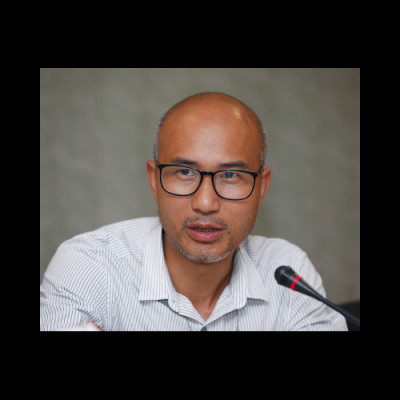
Zhigang Li, Social Sector Specialist, Asian Development Bank
ADB strongly supports SWAp in TVET. TVET is constantly changing; it may look different in the future compared to the past due to technological evolution. So, in that way, it’s much more complicated than primary education. We need to reach a consensus on several priority areas in TVET. The government and development partners must collaborate. One area I can think of is the need to reform the curriculum. ADB will be preparing a TVET programme in the next 1-2 years. We are still trying to identify which areas to support.
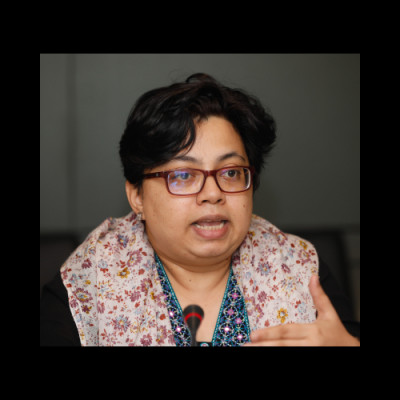
Riful Jannat, Senior Development Advisor, High Commission of Canada
Designing a SWAp for skills development won’t be an easy task, even though we have experience in health and primary education. Lots of issues are likely to emerge which will be a big challenge for the government. Maybe we can look at what challenges we faced during the programme design and planning stage in primary education and health, and learn from those lessons to make our experience in skills development smoother. We have to think about whether we are going to have a SWAp 1 (with a loose coordination mechanism), then SWAp 2, etc., or whether we are going to have a comprehensive plan which will likely be hard to do.
The GoB has to identify the priority areas and let development partners/donors know which areas need technical assistance. Skills development was a crucial element of the 7FYP and will likely be highlighted in the 8FYP as well. The GoB has to let us know how our programmes can complement their development programmes so that we can design them accordingly. The Canadian government was a partner in both PEDP and health SWAp, and the Canadian government is also interested in partnering up in skills SWAp but the demand has to come from the GoB.


 For all latest news, follow The Daily Star's Google News channel.
For all latest news, follow The Daily Star's Google News channel. 


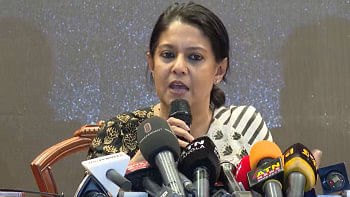
Comments